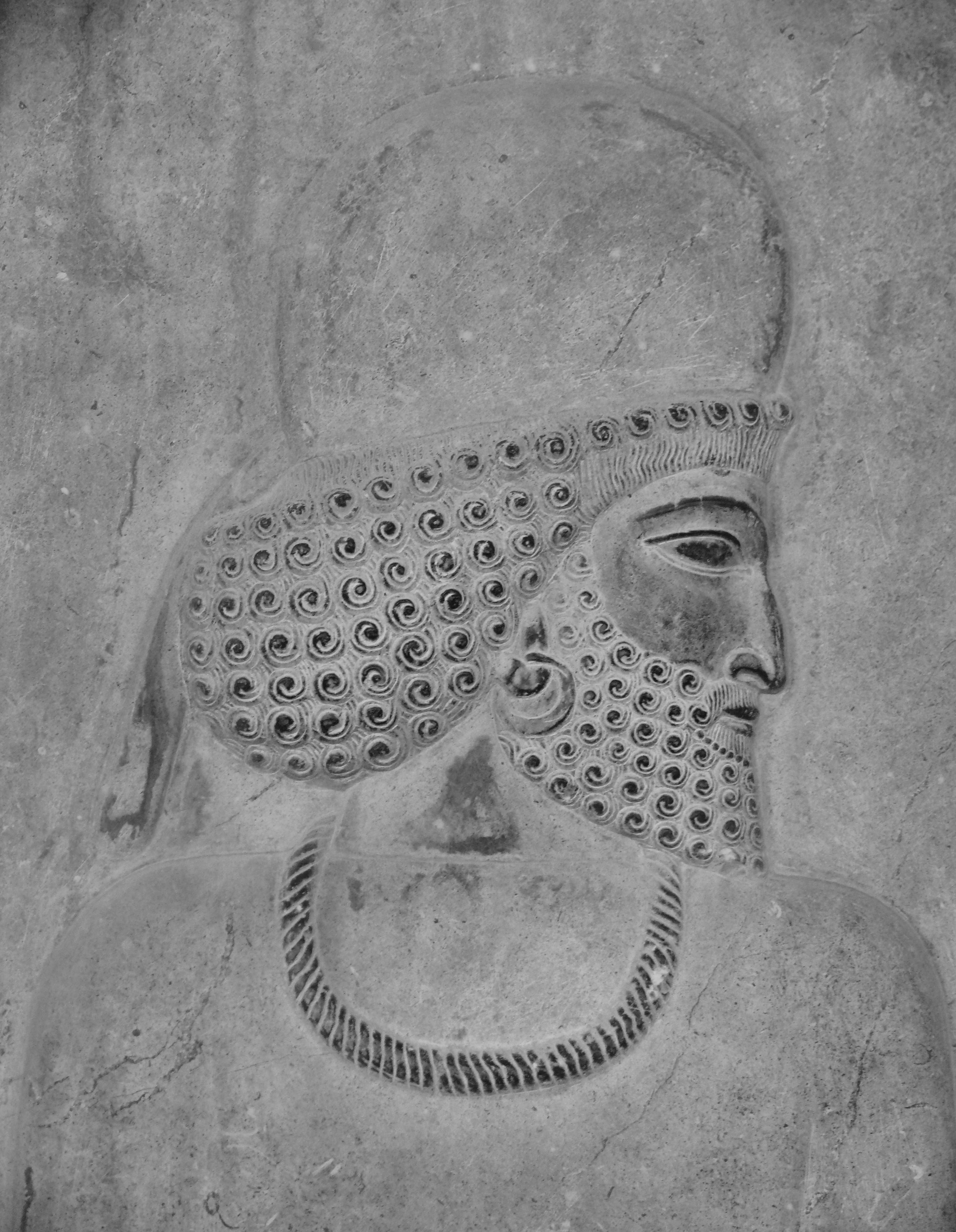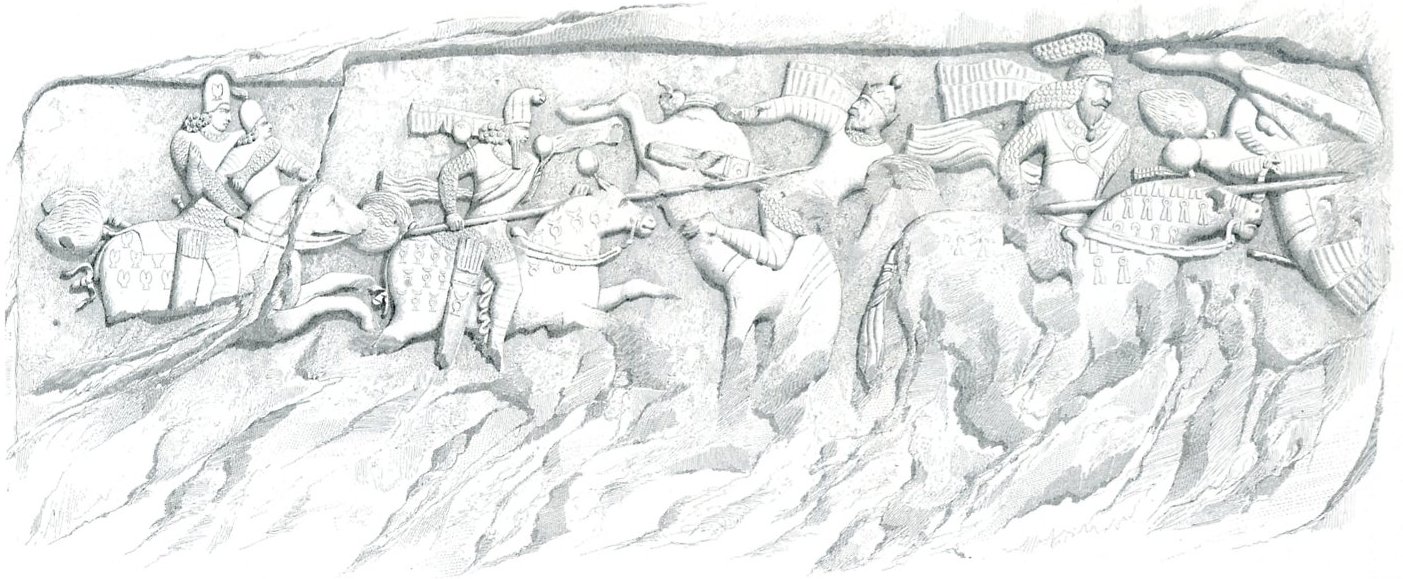|
Sarames The Elder
Sarames the Elder was an Iranian peoples, Iranian officer of Media (region), Median origin, who served in high offices under the Sasanian Empire, Sasanian king Hormizd IV (r. 579–590), possibly as the governor of a province. When Bahram Chobin Sasanian civil war of 589-591, rebelled against Hormizd IV, Sarames was sent to suppress his rebellion, but was defeated and captured by the latter, who had him trampled to death by Persian war elephants, elephants. Sources * * 6th-century births 6th-century Iranian people Generals of Hormizd IV 590 deaths Military personnel killed in action Median people {{Sasanian-bio-stub ... [...More Info...] [...Related Items...] OR: [Wikipedia] [Google] [Baidu] |
Iranian Peoples
Iranian peoples, or Iranic peoples, are the collective ethnolinguistic groups who are identified chiefly by their native usage of any of the Iranian languages, which are a branch of the Indo-Iranian languages within the Indo-European languages, Indo-European language family. The Proto-Iranian language, Proto-Iranians are believed to have emerged as a separate branch of the Indo-Iranians in Central Asia around the mid-2nd millennium BC. At their peak of expansion in the mid-1st millennium BC, the territory of the Iranian peoples stretched across the entire Eurasian Steppe; from the Danube, Danubian Plains in the west to the Ordos Plateau in the east and the Iranian Plateau in the south.: "From the first millennium b.c., we have abundant historical, archaeological and linguistic sources for the location of the territory inhabited by the Iranian peoples. In this period the territory of the northern Iranians, they being equestrian nomads, extended over the whole zone of the ste ... [...More Info...] [...Related Items...] OR: [Wikipedia] [Google] [Baidu] |
Media (region)
Media (, Middle Persian: ''Mād'') is an Iron Age region of north-western Iran, best known for having been the political and cultural base of the Medes. During the Achaemenid period, it comprised present-day Iranian Azerbaijan, Iranian Kurdistan and western Tabaristan. As a satrapy under Achaemenid rule, it would eventually encompass a wider region, stretching to southern Dagestan in the north. However, after the wars of Alexander the Great, the northern parts were separated due to the Partition of Babylon and became known as ''Atropatene'', while the remaining region became known as ''Lesser Media''. History Under the Medes In 678 BC, Deioces united the Medes, Median tribes of Media and made the first Iran, Iranian Empire. His grandson Cyaxares managed to unite all Iranian peoples, Iranian tribes of History of Iran, Ancient Iran and made his empire a major power. When Cyaxares died he was succeeded by his son, Astyages, who was the last king of the Median Empire. Under the Ac ... [...More Info...] [...Related Items...] OR: [Wikipedia] [Google] [Baidu] |
Sasanian Empire
The Sasanian Empire (), officially Eranshahr ( , "Empire of the Iranian peoples, Iranians"), was an List of monarchs of Iran, Iranian empire that was founded and ruled by the House of Sasan from 224 to 651. Enduring for over four centuries, the length of the Sasanian dynasty's reign over ancient Iran was second only to the directly preceding Arsacid dynasty of Parthia. Founded by Ardashir I, whose rise coincided with the decline of Arsacid influence in the face of both internal and external strife, the House of Sasan was highly determined to restore the legacy of the Achaemenid Empire by expanding and consolidating the Iranian nation's dominions. Most notably, after defeating Artabanus IV of Parthia during the Battle of Hormozdgan in 224, it began competing far more zealously with the neighbouring Roman Empire than the Arsacids had, thus sparking a new phase of the Roman–Iranian Wars. This effort by Ardashir's dynasty ultimately re-established Iran as a major power of late an ... [...More Info...] [...Related Items...] OR: [Wikipedia] [Google] [Baidu] |
Hormizd IV
Hormizd IV (also spelled Hormozd IV or Ohrmazd IV; ) was the Sasanian King of Kings of Iran from 579 to 590. He was the son and successor of Khosrow I () and his mother was a Khazar princess. During his reign, Hormizd IV had the high aristocracy and Zoroastrian priesthood slaughtered while supporting the landed gentry (the '' dehqans''). His reign was marked by constant warfare: to the west, he fought a long and indecisive war with the Byzantine Empire, which had been ongoing since the reign of his father; and to the east, the Iranian general Bahram Chobin successfully contained and defeated the Western Turkic Khaganate during the First Perso-Turkic War. It was also during Hormizd IV's reign that the Chosroid dynasty of Iberia was abolished. After negotiating with the Iberian aristocracy and winning their support, Hormizd successfully incorporated Iberia into the Sasanian Empire. Jealous of Bahram's success in the east, Hormizd IV had him disgraced and dismissed, which l ... [...More Info...] [...Related Items...] OR: [Wikipedia] [Google] [Baidu] |
Bahram Chobin
Bahrām Chōbīn () or Wahrām Chōbēn (Middle Persian: ; died 591), also known by his epithet Mehrbandak ("servant of Mithra"), was a nobleman, general, and political leader of the late Sasanian Empire and briefly its ruler as Bahram VI (). Son of general Bahram Gushnasp and hailing from the noble House of Mihran, Bahram began his career as the governor of Ray, and was promoted to the army chief ('' spahbed'') of the northwestern portions of the empire after capturing the Byzantine stronghold of Dara, fighting in the war of 572–591. After a massive Hephthalite-Turkic invasion of the eastern Sasanian domains in 588, he was appointed as the ''spahbed'' in Khorasan, beginning a campaign that ended in a decisive Iranian victory. Bahram earned an elevated position in Iran due to his noble descent, character, skills, and accomplishments. The Sasanian king (shah) Hormizd IV () was already distrustful of Bahram and stripped the increasingly popular general of his commands. Bahr ... [...More Info...] [...Related Items...] OR: [Wikipedia] [Google] [Baidu] |
Sasanian Civil War Of 589-591
The Sasanian Empire (), officially Eranshahr ( , "Empire of the Iranian peoples, Iranians"), was an List of monarchs of Iran, Iranian empire that was founded and ruled by the House of Sasan from 224 to 651. Enduring for over four centuries, the length of the Sasanian dynasty's reign over ancient Iran was second only to the directly preceding Arsacid dynasty of Parthia. Founded by Ardashir I, whose rise coincided with the decline of Arsacid influence in the face of both internal and external strife, the House of Sasan was highly determined to restore the legacy of the Achaemenid Empire by expanding and consolidating the Iranian nation's dominions. Most notably, after defeating Artabanus IV of Parthia during the Battle of Hormozdgan in 224, it began competing far more zealously with the neighbouring Roman Empire than the Arsacids had, thus sparking a new phase of the Roman–Iranian Wars. This effort by Ardashir's dynasty ultimately re-established Iran as a major power of late an ... [...More Info...] [...Related Items...] OR: [Wikipedia] [Google] [Baidu] |
Persian War Elephants
War elephants were used in History of Iran, Iranian military history, most notably in Achaemenid Empire, Achaemenid, Seleucid Empire, Seleucid, and Sasanian Empire, Sasanian periods. These were Asian elephants recruited from the southern provinces of Iran and India, but also possibly Syrian elephants from Syria and western Iran. The men (excluding the driver) sat in a large tower from which troops would fight. The elephant itself would normally be armed with thin plate armour (the Sassanids used chain mail as well as thin plate armour) and would bear a large crenelated wooden ''howdah'' on its back. Persian war elephants were trained by their rider, called a mahout, who would also ride the elephant into battle. While on the move, the elephants required large paths to cut to accommodate their passage. Training elephants was a difficult task and their upkeep was expensive because of their high nutritional demands. History Under the Achaemenids Persians used war elephants at t ... [...More Info...] [...Related Items...] OR: [Wikipedia] [Google] [Baidu] |
6th-century Births
The 6th century is the period from 501 through 600 in line with the Julian calendar. In the West, the century marks the end of Classical Antiquity and the beginning of the Middle Ages. The collapse of the Western Roman Empire late in the previous century left Europe fractured into many small Germanic kingdoms competing fiercely for land and wealth. From the upheaval the Franks rose to prominence and carved out a sizeable domain covering much of modern France and Germany. Meanwhile, the surviving Eastern Roman Empire began to expand under Emperor Justinian, who recaptured North Africa from the Vandals and attempted fully to recover Italy as well, in the hope of reinstating Roman control over the lands once ruled by the Western Roman Empire. Owing in part to the collapse of the Roman Empire along with its literature and civilization, the sixth century is generally considered to be the least known about in the Dark Ages. In its second golden age, the Sassanid Empire reached th ... [...More Info...] [...Related Items...] OR: [Wikipedia] [Google] [Baidu] |
Generals Of Hormizd IV
A general officer is an officer of high rank in the armies, and in some nations' air and space forces, marines or naval infantry. In some usages, the term "general officer" refers to a rank above colonel."general, adj. and n.". OED Online. March 2021. Oxford University Press. https://www.oed.com/view/Entry/77489?rskey=dCKrg4&result=1 (accessed May 11, 2021) The adjective ''general'' had been affixed to officer designations since the late medieval period to indicate relative superiority or an extended jurisdiction. French Revolutionary system Arab system Other variations Other nomenclatures for general officers include the titles and ranks: * Adjutant general * Commandant-general * Inspector general * General-in-chief * General of the Air Force (USAF only) * General of the Armies of the United States (of America), a title created for General John J. Pershing, and subsequently granted posthumously to George Washington and Ulysses S. Grant * (" general adm ... [...More Info...] [...Related Items...] OR: [Wikipedia] [Google] [Baidu] |
590 Deaths
__NOTOC__ Year 590 ( DXC) was a common year starting on Sunday of the Julian calendar. The denomination 590 for this year has been used since the early medieval period, when the Anno Domini calendar era became the prevalent method in Europe for naming years. Events By place Byzantine Empire * Byzantine–Sassanid War: Emperor Maurice defeats the Persian forces under Bahrām Chobin at Nisibis (modern Turkey), and drives them back into Armenia. * Comentiolus, commander () of the eastern army, receives the legitimate Persian king, Khosrau II, as a refugee in his headquarters at Hierapolis. * Maurice establishes the Exarchate of Carthage in Africa. He combines the civil authority of a ''praetorian prefect'' and the military authority, based at Carthage. * March 26 – Theodosius, eldest son of Maurice, is proclaimed as co-emperor. He becomes his father's heir to the Byzantine throne. * Stephen I succeeds his father Guaram I as king of Iberia (Georgia) (approxima ... [...More Info...] [...Related Items...] OR: [Wikipedia] [Google] [Baidu] |
Military Personnel Killed In Action
A military, also known collectively as armed forces, is a heavily armed, highly organized force primarily intended for warfare. Militaries are typically authorized and maintained by a sovereign state, with their members identifiable by a distinct military uniform. They may consist of one or more military branches such as an army, navy, air force, space force, marines, or coast guard. The main task of a military is usually defined as defence of their state and its interests against external armed threats. In broad usage, the terms "armed forces" and "military" are often synonymous, although in technical usage a distinction is sometimes made in which a country's armed forces may include other paramilitary forces such as armed police. Beyond warfare, the military may be employed in additional sanctioned and non-sanctioned functions within the state, including internal security threats, crowd control, promotion of political agendas, emergency services and reconstruction, ... [...More Info...] [...Related Items...] OR: [Wikipedia] [Google] [Baidu] |





